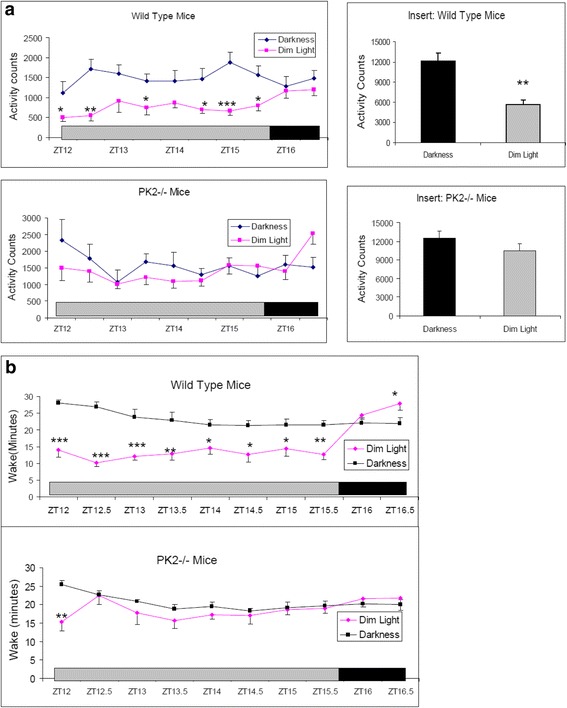Fig. 2.

The effects of dim light on the locomotor activities and the arousal levels. The grey bar shows the four hours of dim light (30 lux) that was administered during ZT12-ZT16 to the WT (N = 6) and the PK2−/− mice (N = 7). a. Compared to darkness, dim light significantly decreased the locomotor activity in the WT mice (P < 0.0001, Two-way ANOVA, *, P < 0.05, **, P < 0.01, ***, P < 0.001 by Bonferroni’s post hoc test). The inhibitory effect of dim light on the locomotor activity was not significant for the PK2−/− mice (P > 0.05, Two-way ANOVA). The inserts show the locomotor activities in the entire four hours (**, P < 0.01, paired t-test). b. Compared to darkness, dim light significantly decreased the arousal levels in the WT mice (P < 0.0001, Two-way ANOVA, *, P < 0.05, **, P < 0.01, ***, P < 0.001, by Bonferroni’s post hoc test). The inhibitory effect of dim light on the arousal levels of the PK2−/− mice was only significant for the first 30 min (P < 0.05, Two-way ANOVA, **, P < 0.01, by Bonferroni’s post hoc test)
